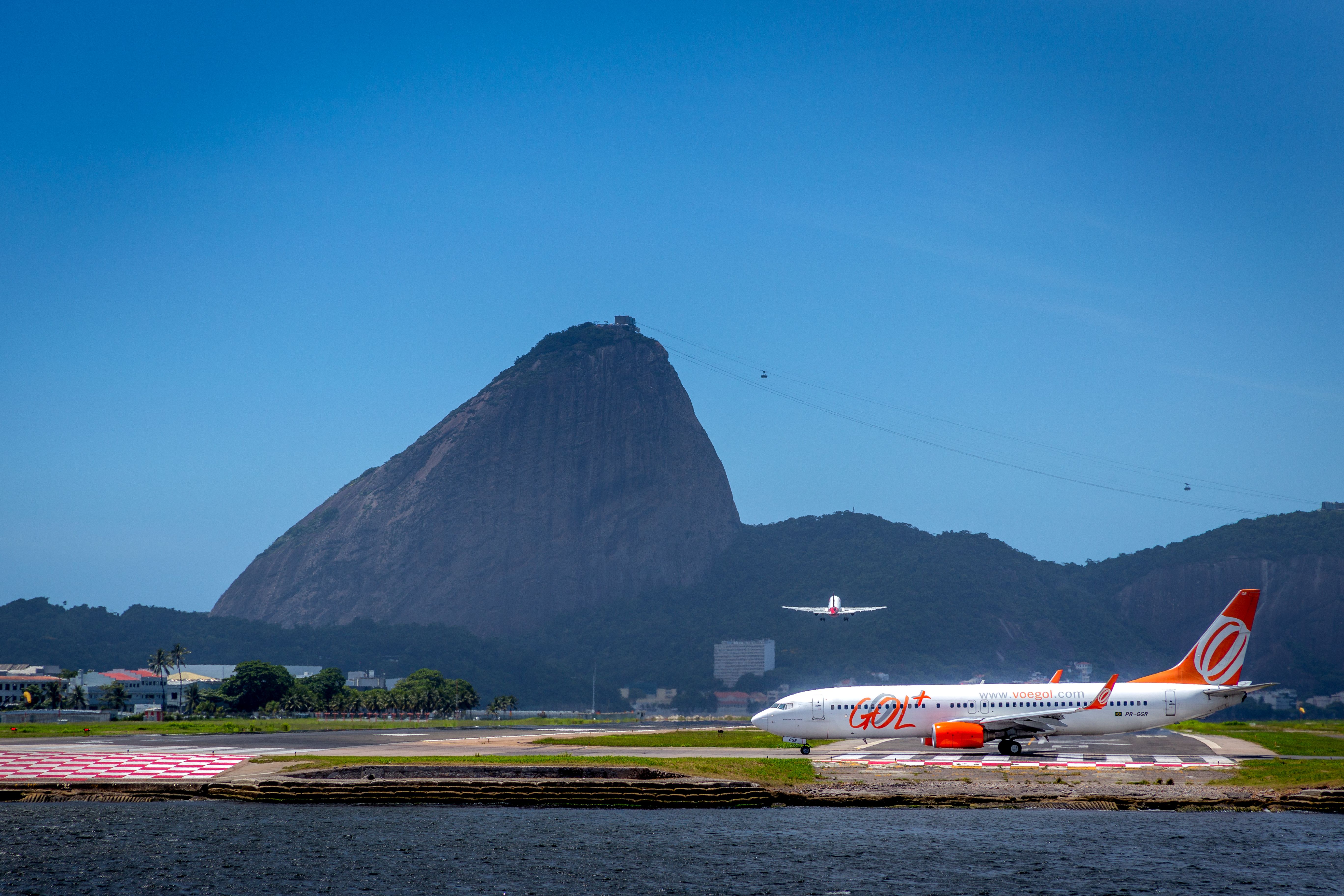Summary
- The Brazilian government has decided to restrict flights at Santos Dumont Airport, limiting them to a 400 km radius from the origin or destination, which has been met with opposition from the airline industry.
- The International Air Transport Association (IATA) disagrees with this measure, stating that it will limit customer choice and negatively impact the aviation value chain and connectivity in the Rio de Janeiro area.
- If the restriction were to be introduced today, Santos Dumont Airport would see the cancelation of 15 routes, resulting in the scrapping of 603 weekly flights and affecting 93,838 seats.
Last week, the Brazilian government restricted flights at Rio de Janeiro’s Santos Dumont Airport (SDU), limiting them to distances of up to 400 kilometers (248.5 miles) from the origin or destination starting in 2024. The airline industry has opposed this measure.
What’s going on?
The decision to restrict flights at the Santos Dumont Airport is connected with revitalizing the international Tom Jobim Airport, also known as Galeao (GIG), as reported by local media outlets. The federal government, through a decision signed by the Minister of Ports and Airports, Márcio Franca, said,
“Operations should be planned considering a geographical criterion – a maximum distance of 400 kilometers from the destination or origin in domestic flight airports.”
The measure will be introduced starting on January 2, 2024. As you can see in the map below, the 400 kilometers radius leaves Santos Dumont with an extremely restricted area of operations. Among the Brazilian cities that could be connected to Santos Dumont are São Paulo, Campinas, Juiz de Fora, and Belo Horizonte.
IATA is against this measure
Unsurprisingly, the Brazilian civil aviation industry is against the measure announced by the government. The International Air Transport Association (IATA) released a statement opposing the restriction of operations at Santos Dumont. Peter Cerdá, regional vice president in the Americas for IATA, said,
“Restricting destinations from SDU will limit customer choice and will negatively impact the entire aviation value chain and connectivity of the Rio de Janeiro catchment area. Approximately 60% of currently scheduled flights at SDU are to destinations other than São Paulo Congonhas and Brasília and are unlikely to be transferred in full to Rio de Janeiro’s Galeão airport (GIG).”
The decision to impose flight restrictions on Santos Dumont conflicts with international regulations, said IATA in a statement. This measure also reduces the attractiveness of the Brazilian market, harming the business environment in the country due to the uncertainties and lack of predictability that are so essential for the smooth functioning of this complex global system, which is the air transportation sector, the airline body regulator pointed out.
Peter Cerdá added,
“The right of passengers to choose where to fly should not be limited by decisions that dictate the destinations of an airport. Prosperous aviation is built upon market freedom; therefore, the decision about destinations from Santos Dumont should be an individual choice of passengers.”
How would the restriction impact current operations?
According to data from Cirium, Santos Dumont Airport currently has 1,199 weekly flights operated by four airlines. All of these flights are domestic. The airport is connected to 19 destinations across the country.
If Brazil’s new restriction on Santos Dumont were to be introduced today, the airport would see the cancelation of 15 routes, scrapping 603 weekly flights and 93,838 seats. The airlines would have to stop flying to destinations such as Sao Paulo Viracopos (253 miles), Brasilia (575 miles), Porto Alegre (695 miles), and Recife (1,154 miles).
Instead, Santos Dumont would keep 596 weekly flights to four destinations: Campos dos Goytacazes (12 weekly services), Sao Paulo Congonhas (393 weekly flights), Belo Horizonte (88), and Sao Paulo Guarulhos (103).
What do you think about the Brazilian government’s decision to restrict Santos Dumont’s operations? Let us know in the comments below.



